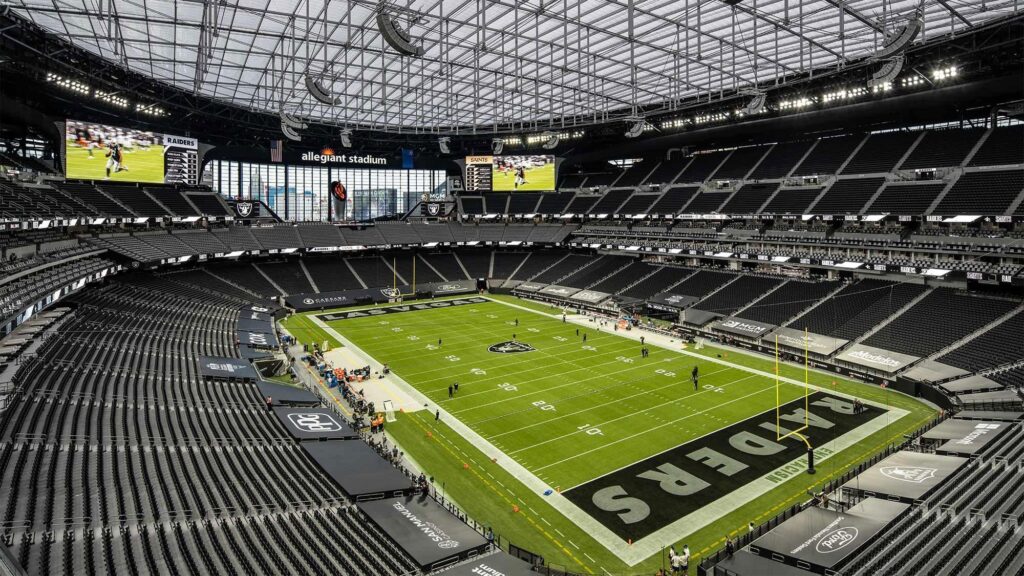The cost of the Oakland Athletics’ planned Las Vegas stadium could escalate to $2 billion, according to team owner John Fisher. The revelation raises fresh questions about the financial scope and timeline of the franchise’s highly anticipated move to Las Vegas. As the project advances, city officials and stakeholders grapple with the evolving budget projections and their potential impact on local taxpayers and economic development.
Cost Concerns Rise as Stadium Budget Nears Two Billion Dollars
Financial apprehensions are mounting as the planned stadium for the A’s in Las Vegas edges closer to a $2 billion price tag. Team owner John Fisher recently acknowledged the possibility of costs escalating beyond initial estimates, underscoring the complexity and scale of the project. Rising construction expenses, supply chain disruptions, and inflationary pressures play a significant role, challenging the original budget frameworks established when the stadium was first announced.
Key factors driving the budget surge include:
- Increased material costs, especially steel and concrete
- Labor shortages impacting construction timelines
- Enhanced design features and sustainability measures
- Regulatory and permitting delays adding unforeseen expenses
| Budget Category | Initial Estimate | Revised Projection |
|---|---|---|
| Construction | $1.2B | $1.5B |
| Design & Engineering | $200M | $250M |
| Permits & Fees | $100M | $140M |
| Contingency | $150M | $110M |
Owner Fisher Addresses Funding Challenges and Future Financial Plans
Owner John Fisher recently acknowledged that the financial landscape for the new Las Vegas stadium has become more complex than initially anticipated. Escalating construction costs, supply chain disruptions, and fluctuating market conditions have contributed to the potential rise in total expenses, now projected to approach $2 billion. Despite these hurdles, Fisher remains cautiously optimistic, emphasizing a committed strategy to secure necessary funding through a diversified mix of private investments, public partnerships, and innovative financing models.
Fisher outlined several key planning initiatives aimed at addressing these fiscal challenges:
- Engaging local and state government stakeholders to explore tax incentives and infrastructure support
- Attracting additional private equity investors through equity crowdfunding platforms
- Implementing phased construction to manage cash flow and mitigate financial risk
- Exploring corporate sponsorships and naming rights to help offset operational costs
The owner also highlighted ongoing negotiations with financial institutions to secure favorable loan terms, underscoring the importance of maintaining flexibility in the project’s budgetary framework as the team navigates a dynamic economic environment.
| Funding Sources | Estimated Contribution |
|---|---|
| Private Equity | 45% |
| Public Funding | 30% |
| Corporate Sponsorships | 15% |
| Loans & Financing | 10% |
Economic Impact of the Expanded Stadium on Las Vegas Community
The potential increase of the stadium’s cost to $2 billion signals a significant economic infusion into the Las Vegas region. Beyond just creating a landmark for sports fans, the expanded facility is positioned to stimulate local businesses through heightened tourism and increased foot traffic. Restaurants, hotels, and retail shops surrounding the stadium are expected to see a sustained boost in revenue, as events draw large crowds year-round. City officials anticipate that the project will generate thousands of construction jobs during the build phase, followed by permanent employment opportunities in operations, hospitality, and event management sectors.
Key factors driving economic growth include:
- Job creation: From construction workers to stadium staff and contractors.
- Tourism influx: Drawing out-of-town visitors for games and other events.
- Infrastructure improvements: Enhancing public transit and roads around the stadium area.
- Increased tax revenues: Boosting city and state budgets for community investments.
| Economic Indicator | Estimated Impact |
|---|---|
| New Jobs Created | 5,000+ |
| Annual Visitor Increase | 1.2 Million |
| Local Business Revenue Growth | 15-20% |
| Additional Tax Income | $50M/year |
Recommendations for Managing Construction Costs and Ensuring Project Viability
To keep escalating costs in check, stakeholders of large-scale projects like the Las Vegas stadium must prioritize robust cost management strategies. Implementing early-stage value engineering and continuous budget forecasting can help identify potential overruns before they spiral out of control. Equally important is fostering transparent communication between owners, contractors, and suppliers to swiftly address issues such as material shortages or labor challenges that typically inflate expenses. Utilizing digital project management tools can also provide real-time data insights, enabling on-the-fly adjustments that preserve financial and operational flexibility.
Another crucial factor for maintaining project viability is balancing ambition with realistic financial planning. Emphasizing these core elements can mitigate risks and build investor confidence:
- Contingency plans: Allocate a dedicated budget for unforeseen costs related to regulatory changes or supply chain disruptions.
- Phased development: Break the project into manageable stages to reduce upfront financial exposure and allow for reassessment.
- Stakeholder engagement: Regular updates and transparent reporting to keep all partners aligned and proactive.
| Recommendation | Expected Benefit | Impact on Cost Control |
|---|---|---|
| Value Engineering | Optimized design and materials | High |
| Contingency Budgeting | Buffer for unexpected expenses | Medium |
| Phased Construction | Reduced upfront risk | Medium |
| Digital Management Tools | Improved oversight and agility | High |
The Conclusion
As the Oakland Athletics navigate the complexities of bringing their Las Vegas stadium project to fruition, the potential cost increases underscore the financial challenges ahead. Owner John Fisher’s acknowledgment of a possible rise to $2 billion reflects broader trends in construction and development expenses. Stakeholders and fans alike will be watching closely as plans evolve, with the team committed to delivering a premier venue that meets the expectations of a growing fan base in a competitive sports market.





